The NVIDIA GeForce GTX 750 Ti and GTX 750 Review: Maxwell Makes Its Move
by Ryan Smith & Ganesh T S on February 18, 2014 9:00 AM ESTMeet The Reference GTX 750 Ti & Zotac GTX 750 Series
For the launch of the GTX 750 series NVIDIA is doing a pure virtual launch. NVIDIA’s partners will be launching with custom cards from day-one, and while NVIDIA has put together a reference board for testing and validation purposes, the partners will not be selling that reference board. Instead we’ll be seeing semi-custom and fully-custom designs; everyone has their own cooler, a lot of partners will be using the NVIDIA reference PCB, and others will be rolling out their own PCBs too. Since these are sub-75W/sub-$150 cards there’s not a lot of room for variation – expect single and dual fan open air coolers – but we’ll have to see just what the partners cook up. GM107 should be suitable for fully passive designs and low-profile designs, and while we’ve seen one low-profile design so far we haven’t seen any passive designs yet.
Meanwhile for the purposes of the GTX 750 Ti launch NVIDIA has seeded the press with the GTX 750 Ti reference board for evaluation purposes. They have not seeded the press with GTX 750 boards, so we’ll be looking at a retail board in that scenario.
Reference GeForce GTX 750 Ti
The reference GeForce GTX 750 Ti is fairly typical of what retail boards will be like. NVIDIA’s cooler of choice on the reference GTX 750 Ti is a small but effective open air double-wide cooler. NVIDIA’s using a low-profile aluminum heatsink that covers roughly half the card, topped with a 55mm fan. This is the cooler style that most partners will mimic, as the 60W TDP of the GTX 750 Ti does not require a particularly large cooler. As is common with open air coolers, the heatsink itself doesn’t make contact with the on-board RAM, so RAM cooling is left to airflow coming off of the fan.
NVIDIA’s RAM of choice for the GTX 750 Ti is their traditional favorite, Hynix 6GHz GDDR5, with NVIDIA using Hynix’s new 4Gb modules to get 2GB with just 4 modules. The use of 6GHz RAM, which will be common across this product, means that the GTX 750 Ti will have some memory overclocking headroom right out of the box, memory bus willing. NVIDIA uses 4 pieces of it in a 4x32bit configuration, with 4 more pads on the back of the card for another 4 pieces for 4GB cards should the need arise.
Moving on, the PCB itself is largely lifted from the GTX 650 and GTX 650 Ti, the similar TDPs allowing partners to get their customized cards out right away, and indicating that GM107 doesn’t have significantly different I/O or power delivery requirements than GK107. This puts the length of the card at 5.75” – about as short as a PCIe x16 card can be – in a full-profile form factor. There is a spot on the board for a PCIe power socket, and while it’s not used nor necessary on the reference design, this does leave the door open to more aggressive overclocking designs on partner cards.
Finally, display connectivity is provided by 1 DL-DVI-I port, 1 DL-DVI-D port, and a mini-HDMI port. Since Maxwell GPUs support 4 displays the GTX 750 Ti can drive up to 3 displays via these connectors in any combination and configuration. The lack of a DisplayPort is disappointing, but not surprising. With most partners opting for 2x DVI and 1x mini-HDMI on their GTX 650 series cards, the PCB reuse means the GTX 750 Ti launch cards will be of a similar makeup. As a result we will see some DisplayPort enabled cards, and we wouldn’t be surprised if this shifted a bit over the coming months as partners move inventory and can take the time to do more customization to their designs. NVIDIA’s G-Sync technology would be a good match for these cards given the lower framerates we typically see, so having DisplayPort connectivity here will be important for NVIDIA’s G-Sync initiative as the first native G-Sync monitors hit the market later this year.
Zotac GeForce GTX 750 Series
| GeForce GTX 750 Series Specification Comparison | |||||
| GeForce GTX 750 Ti (Ref) | Zotac GeForce GTX 750 Ti | Zotac GeForce GTX 750 | |||
| Base Clock | 1020MHz | 1033MHz | 1033MHz | ||
| Boost Clock | 1085MHz | 1098MHz | 1098MHz | ||
| Memory Clock | 5.4GHz | 5.4GHz | 5.0GHz | ||
| VRAM | 2GB | 2GB | 1GB | ||
| TDP | 60W | 60W | 55W | ||
| Width | Double Slot | Double Slot | Double Slot | ||
| Length | 5.75" | 6" | 6" | ||
| Warranty | N/A | 3 Year (Upon Registration) | 3 Year (Upon Registration) | ||
| Price | $149 | $149 | $119 | ||
For retail cards we were able to get our hands on Zotac’s entry level GeForce GTX 750 series cards. As both of these cards use the same PCB and cooler, we’ll be referring to them together unless otherwise noted.
As is often the case, Zotac’s entry level GeForce GTX 750 series cards end up being very similar to the NVIDIA reference design. The PCB as far as we can tell is identical to the reference PCB, so all of the power delivery and clockspeed properties are the same.
Zotac’s cooler of choice is lifted from their GTX 650 Ti, and like NVIDIA’s reference design is an open air cooler. Zotac is using an 85mm fan suspended over a mid-profile aluminum heatsink that covers just over half the card, with a minimal shroud around it. The heatsink only makes contact with the GPU, so cooling for the RAM and VRM components is supplied via airflow alone. The similarity between the Zotac and NVIDIA designs means that it has the same double-slot width, while the shroud pushes the length of the card out to 6” flat.
Meanwhile from a specification point of view Zotac has goosed their entry level cards slightly. Both cards start at one boost bin above NVIDIA’s reference, putting them at 1033MHz for the core clock as opposed to 1020MHz for a reference card. Zotac has not changed the RAM specifications however, so we’re still looking at 5.4GHz for GTX 750 Ti and 5.0GHz for GTX 750.
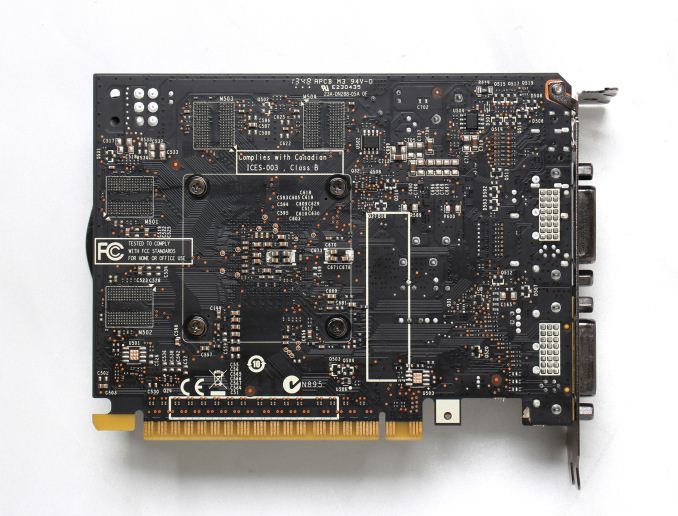 Speaking of RAM, looking at the Zotac GTX 750 we can get an idea of what to expect for RAM on a GTX 750 card. Zotac is using a 4x32bit configuration of Hynix H5GC2H24BFR-T2C, an interesting 2Gb module that can run at either 6GHz at normal voltages (1.5v), or 5GHz at low voltages (1.35v). We’re not able to tell which voltage mode Zotac is using, but given the configuration we wouldn’t be surprised to see them using 1.35v for extra power savings. Otherwise this means that the RAM on this card is significantly overpowered, which would be good for memory overclocking.
Speaking of RAM, looking at the Zotac GTX 750 we can get an idea of what to expect for RAM on a GTX 750 card. Zotac is using a 4x32bit configuration of Hynix H5GC2H24BFR-T2C, an interesting 2Gb module that can run at either 6GHz at normal voltages (1.5v), or 5GHz at low voltages (1.35v). We’re not able to tell which voltage mode Zotac is using, but given the configuration we wouldn’t be surprised to see them using 1.35v for extra power savings. Otherwise this means that the RAM on this card is significantly overpowered, which would be good for memory overclocking.
Meanwhile since Zotac’s PCB is identical to NVIDIA’s reference PCB, the I/O options are also the same: 1 DL-DVI-I port, 1 DL-DVI-D port, and a mini-HDMI port. Zotac tells us that they will also be releasing an OC edition card alongside these entry level cards, and that OC card will have a DisplayPort in order to be G-Sync ready.
Rounding out the package is the usual collection of a DVI-to-VGA adapter, Zotac’s “Boost Premium” OEM trialware, and the obligatory quickstart guides. Since these are entry level cards Zotac is sticking to NVIDIA’s MSRPs, putting their GTX 750 Ti card at $149 and their GTX 750 card at $119. Meanwhile for the warranty Zotac is offering a base 2 year warranty, which can be extended to a 3 year warranty by registering the card within 30 days.


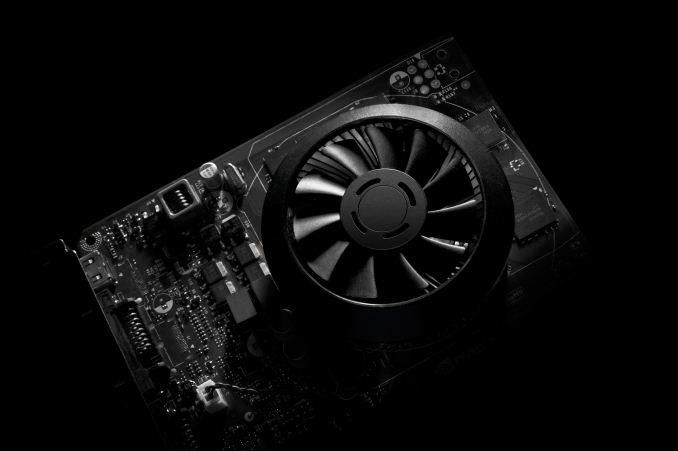
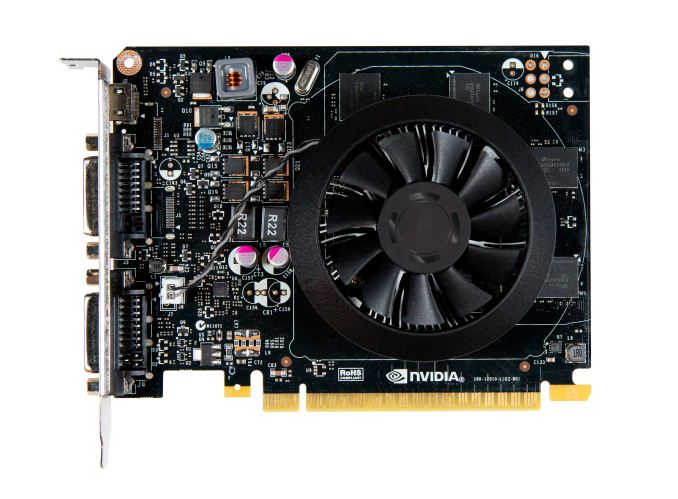
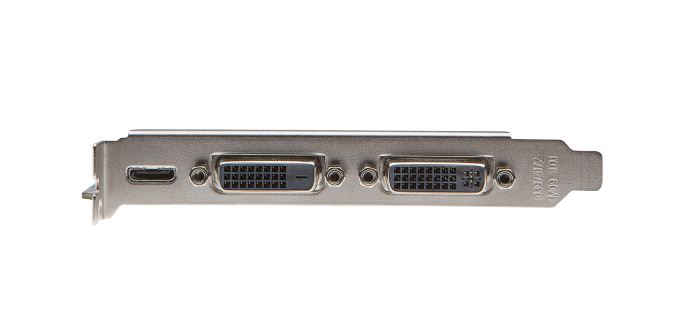

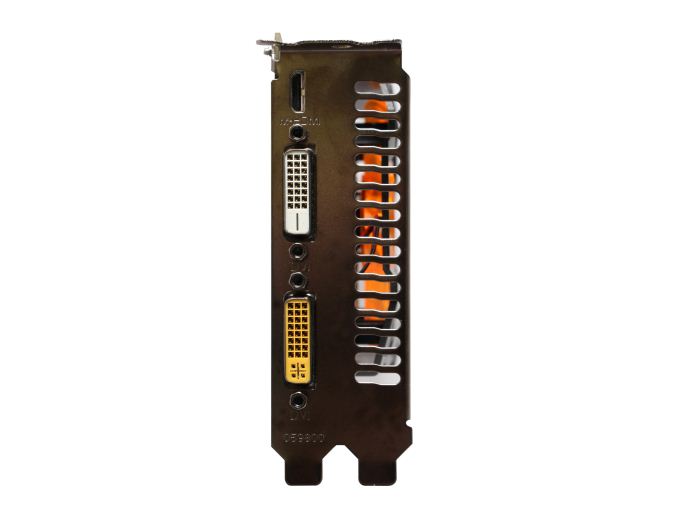








177 Comments
View All Comments
TheJian - Wednesday, February 19, 2014 - link
You are only able to say AMD is winning with 265 because of magical pricing that probably won't exist, just like 290x/290 are not $550/400, which we now know are really $709/550 (amazon's lowest pricing, which is below newegg on 290, about even on 290x - amazon has 290x in stock). At least most are out of stock now, so maybe they're selling better or it really is just a shortage of chips like PNY says. I'm guessing the shortage of chips that can run 1ghz is causing problems and higher pricing on 290/290x, not selling like crazy. If they were selling like crazy to miners etc AMD would have had a quarter like NV had where GPU revenues rose 14% on the backs of HIGH-END gpu sales in a 11% down PC market. The 290/290x are AMD's high end, yet selling out means zero profits? So High-End isn't selling much and is just a shortage of 1ghz chips then right? 10mil console chips were all of AMD's gpu profits (10mil x $12 each=120mil pretty much exactly AMD's profits).I don't see how Anandtech etc can say crypto mining is insane, when AMD's quarterly report shows miners must not be buying them much at all after the first rush at launch. Otherwise they would have made more than just console money. AMD said they get low double digits on consoles now (so not mid which would be 15%, if closer to 15% profits would be like 150mil), which is 8.2mil units already purchased in retail consoles, and another ~2mil in transit or already in MS/Sony being boxed up for more retail boxes. AMD gets their money long before we see it on the shelf in a console (hence the ~2mil in transition). MS/Sony don't pay AMD AFTER the console sales, they pay them BEFORE it gets anywhere near a box on a shelf. So AMD has already sold more than the shelf sales show.
On the flipside, NV has a quarter with ~$145mil in profits and basically ALL of that is from GPU's. So again, if AMD is selling out (in any volume that is) how come they didn't have $240mil in profits or something like this? Why no profits from GPU's showing up? There must be a real shortage that isn't due to them selling out like crazy, but instead due to manufacturing chips that can do 1ghz without throttling. This is the ONLY assumption that fits the financial data. Miners are NOT buying these in massive quantities. AMD just can't make enough to satisfy anyone, thus the price goes through the roof and companies like PNY say they can't get chips. In turn this causes AMD's MSRP to basically be magical fairy dust pricing which may not be REALITY for many months to come :( Your price perf story doesn't fit. AMD is winning nothing.
Let me know when you can buy a 290 or 290x for $400 or $550. Let me know when you can buy a 265 for $149. This may turn out to be real for 265 but it isn't now and Anandtech shouldn't be comparing cards that don't even exist yet and pricing is unknown. I mean the reviews of 290/290x said "these are awesome buys", blah blah, but at $709 for 290x isn't it a terrible deal with 780TI OC models going for the same exact price but winning by 20%?
http://hardocp.com/article/2014/02/10/msi_geforce_...
OC 290x vs. OC 780ti.
"The current street price of the ASUS R9 290X DirectCU II OC is $699.99 at several etailers (if you can find it in stock), representing a significant bump from its MSRP of $569.99. If you were to compare the two cards at MSRP, then the 20% performance difference between these could easily be accounted for with the 20% difference in price. However, at the current street pricing, the MSI GeForce GTX 780 Ti GAMING 3G simply slaps the ASUS R9 290X DirectCU II OC around with a large rainbow trout."
Slaps AMD around like a rainbow trout? OK, OC & price contest settled then. Custom cooling won't magically trump 780TI and MSRP for 290x of $550 and reality for a card that can actually do AMD's magical ref speeds and up is a $150 difference. I don't know why anyone would buy a 265 for compute (or any card in this category, stupid to benchmark this for these low end models), so maybe AMD will actually get to $150 on them. But giving reviews based on pricing we now know may not happen on cards that aren't even available yet vs. a HARD LAUNCH with OC models already out far above what is tested here by anandtech is a bit of a pipe dream at best.
http://www.tomshardware.com/reviews/radeon-r7-265-...
"In short, you'll have to pardon our skepticism that Radeon R7 265 will show up on time and at the price point AMD is claiming. We've seen fingers pointed at gun-shy add-in board partners, performance-thirsty cryptocurrency miners, price-gouging retailers, and foundries unable to keep up with supply. But at the end of the day, we're left wondering why AMD is setting prices if it can't control what you pay for its hardware? After piling praise onto the Radeon R9 280X at $300 and 290X at $550, it's our credibility on the line now, and we've been burnt too many times to give you guidance on a card you can't buy yet."
Just one of 3-4 of their paragraphs outlining the pricing problems and AMD's magical prices :) You get a whole page dedicated to AMD's pricing issues at tomshardware...LOL. Tomshardware is worried about credibility claiming AMD's pricing is real.
Even anandtech says it's probably magical pricing, so why compare the 265 to 750ti as if 265 will actually be $149?
http://www.anandtech.com/show/7754/the-amd-radeon-...
"but unless something changes to bring the other Pitcairn cards back down to their MSRPs, then $149 for 265 may be an unreasonable expectation"
"The lack of selection has done no favors for the pricing, leading to 260 prices starting at $125. This is $15 above MSRP – a significant difference for this segment of the market – and just a stone’s throw away from the 260X at current prices."
More comments about lack of 250's etc also. AMD can't seem to put a card out at MSRP. How do you come to the conclusion AMD wins at price perf, when no card is MSRP? Reality check please pal. If 260x is supposed to be $120 for new MSRP how is this possible given we already have regular 260 at $125? Again magical pricing is used for your statements not REALITY.
Current pricing on 290x/780TI are the same, and 780TI smoke it slapping it around like a rainbow trout. :) Not sure how you get AMD is winning from all of these comments. Yeah if you include magical pricing that may ONE DAY exist, but not REALITY for right now. You keep living in your fantasy world, I'll just stay in reality thanks. I fail to see how AMD will be able to keep up with R&D NV is clearly investing in GPU's. I'm not sure why anandtech even bothered to benchmark the ref design, when they admit NOBODY will be shipping them.
"NVIDIA’s partners will be launching with custom cards from day-one, and while NVIDIA has put together a reference board for testing and validation purposes, the partners will not be selling that reference board. Instead we’ll be seeing semi-custom and fully-custom designs; everyone has their own cooler, a lot of partners will be using the NVIDIA reference PCB, and others will be rolling out their own PCBs too."
So why test them? That isn't reality as they clearly point out.
http://www.anandtech.com/show/7764/the-nvidia-gefo...
I don't get it. Further showing their AMD love they left the Zotac out of most high end benchmarks and only used ref. What? After clearly stating REF won't even be sold why KEY on REF designs in your benchmarks? Oh right, they only have an AMD portal on anandtech...Never mind...LOL. I get it. :)
http://www.newegg.com/Product/ProductList.aspx?Sub...
For $5-10 more over a REAL MSRP on 750ti you get 1176/1255 or 1202/1281 which are both WAY over stock.
If maxwell is designed for mobile gaming so "who cares" then AMD is designed for compute/mining crap that has just about NOTHING to do with gaming so "who cares" too right? I mean if you want to win synthetic crap buy AMD. If you want to win in gaming buy NV. It would seem NV has the right idea for their audience. Also I wasn't aware Intel has ever put anything out in GPU that is damned good. LOL. They can't even catch BROKE AMD's Kaveri.
You're basing your price perf comment on pricing that is not REAL. Get back to us when AMD puts out something that sells at their MSRP. Until then their PRICE is FAKE, and price to performance crap is meaningless unless you talk in terms of REAL pricing. In which case NV looks great as hardocp shows.
"On a pure price/performance basis, the GTX 750 series is not competitive. If you’re in the sub-$150 market and looking solely at performance, the Radeon R7 260 series will be the way to go."
Fantasy pricing makes this comment moot.
"With that said however, we will throw in an escape clause: NVIDIA has hard availability today, while AMD’s Radeon R7 265 cards are still not due for about another 2 weeks. Furthermore it’s not at all clear if retailers will hold to their $149 MSRP due to insane demand from cryptocoin miners; if that happens then NVIDIA’s competition is diminished or removed entirely, and NVIDIA wins on price/performance by default."
That comment is REALITY. We know they won't be MSRP if recent history is any indication. They have been so wrong that tomshardware can't recommend anything on MSRP now. Anyone making comparisons on MSRP for AMD at this point is not credible. Hardocp, tomshardware etc all note it's currently FAKE pricing. Until that changes any site should be writing reviews with REAL pricing in the recommendations/conclusions and people like you should just avoid using phrases like "price performance" ;) AMD is losing everything on price performance when using REAL pricing. I don't know why anyone even quotes MSRP. It's merely a SUGGESTED price. You should just quote the lowest newegg or amazon price as that is the lowest you can get MSRP or not. IF it's NOT a hard launch so you can get that pricing, you shouldn't be reviewing something (since I can't REALLY buy it and have no idea of the REAL price). Get it?
NV needs to say Titan Black is MSRP of $550 I guess and start acting like AMD. Reviews would have to be written with MSRP conclusions for them then too right? Has anyone gotten a 290 for $400 or 290x for $550? Doubtful. Time for NV to join the lying game and soft launches with pricing that may not come for months?
From anandtech's 265 article:
"Finally, for the time being NVIDIA’s competition is going to be spread out, leaving a lack of direct competition for AMD’s latest arrivals. With the retirement of GTX 650 Ti Boost, NVIDIA doesn’t currently have a product directly opposite 265 at $149, with GTX 660 well above it and GTX 650 Ti well below it. On the other hand, NVIDIA’s closest competition for 260 as it stands is GTX 650 Ti, though this would shift if 260X cards quickly hit their new $119 MSRP."
Totally false considering all AMD pricing is fake right? If 260x QUICKLY hits $119 new MSRP? ROFL. Until they HIT that pricing shut up please. NV doesn't have a direct competitor to $149 265? Yeah because it won't REALLY be $149...LOL. 270 shows it, 260 shows it, 290, 290x, 280, 280x...jeez. Does AMD have a card that really is MSRP? So anandtech is comparing the NV stack to a magically priced fairy dust AMD stack right? That seems a bit unfair considering all the data on AMD pricing currently and EVERY site commenting on it. They continue to heap praise on AMD in reviews based on fake pricing. You can't write a whole page on how bad AMD's pricing situation is then go ahead and write conclusions and recommendations on that fake pricing as if it is real or will be real at some point MAYBE. Misleading the public at best, which is why tomshardware/hardocp etc backed off now. NV wins by default, until AMD puts out a real MSRP card. Anandtech still gives AMD the benefit of the doubt giving NV an escape clause...It should be the other way around. AMD needs that clause as no card they've released recently is MSRP.
ninjaquick - Thursday, February 20, 2014 - link
AMD's MSRP is very real, the issue is supply cannot meet demand. AMD only sees the money they make selling cards to vendors, if they had direct supply control (AMD badged products) they could be making money hands over fists with the inflation, but AMD isn't in the position to do that. They sell their chipsets at the stipulated pricepoint to their vendors, and the vendors then either pass on the savings, or squeeze supply and drive up prices for retailers. If they pass on the savings, then ultimately retailers are capitalizing on the consumer's willingness to pay more, but AMD, ultimately, will see no profits from this, and their sales will be hurt by lower flow due to high prices.Plenty of people bought 2XX series cards for their MSRP before LiteCoin made the prices skyrocket. To date, only the 290 series is still hyper inflated. And the MSRPs being determined there are from the vendors, not AMD.
chiechien - Friday, February 28, 2014 - link
The 280x are still priced 50% to 100% over MSRP, too. They're supposed to be $300, but you can't find cheaper than $450, with $5-600 quite common. The R9 270x runs about $50-$100 over MSRP (25-50%).Zetbo - Thursday, February 20, 2014 - link
I just bought 4096MB Asus Radeon R9 290 DirectCU II OC Aktiv PCIe 3.0 x16 for 397,53eur. I think it's fair price. http://www.mindfactory.de/product_info.php/4096MB-...vision33r - Sunday, March 9, 2014 - link
That tiny fraction currently buys more GPUs than the avg consumer. Thus the demand for AMD's high end GPUs.A5 - Tuesday, February 18, 2014 - link
If you really need full FP64, get whoever is paying you to buy a Tesla card.extide - Tuesday, February 18, 2014 - link
Or go with a big-GCN card :)A5 - Tuesday, February 18, 2014 - link
Or that, assuming your code isn't locked in to CUDA.ddriver - Tuesday, February 18, 2014 - link
Thank god it is not. Running about 50 TFLOPS here, nice cheap radeons, no tesla overpriced junk thank you very much nvidia.Morawka - Tuesday, February 18, 2014 - link
where you buying your radeons? they are overpriced price gouged to hell, Steaming hot thermals but sure it does fp 64 great go get em tiger!!!